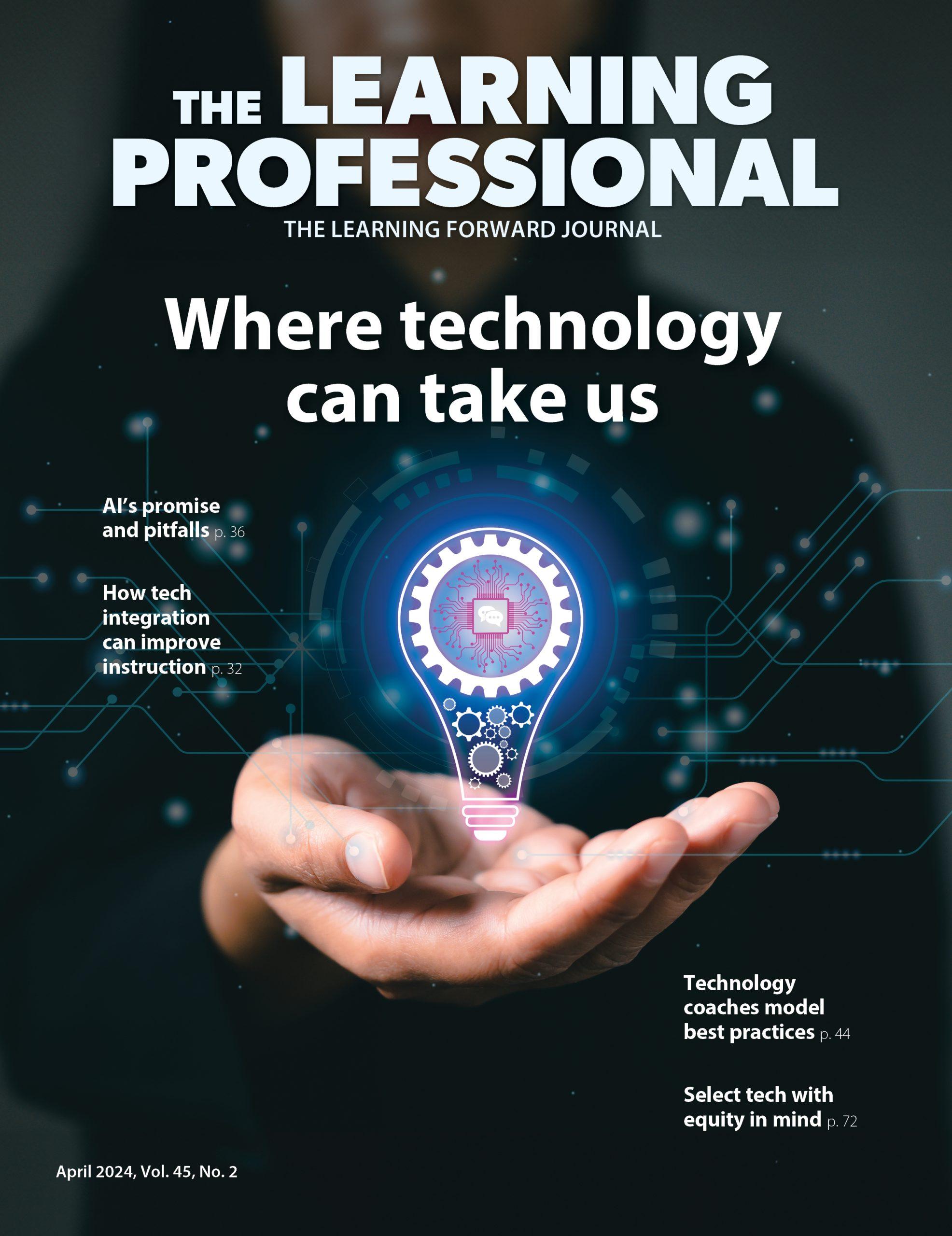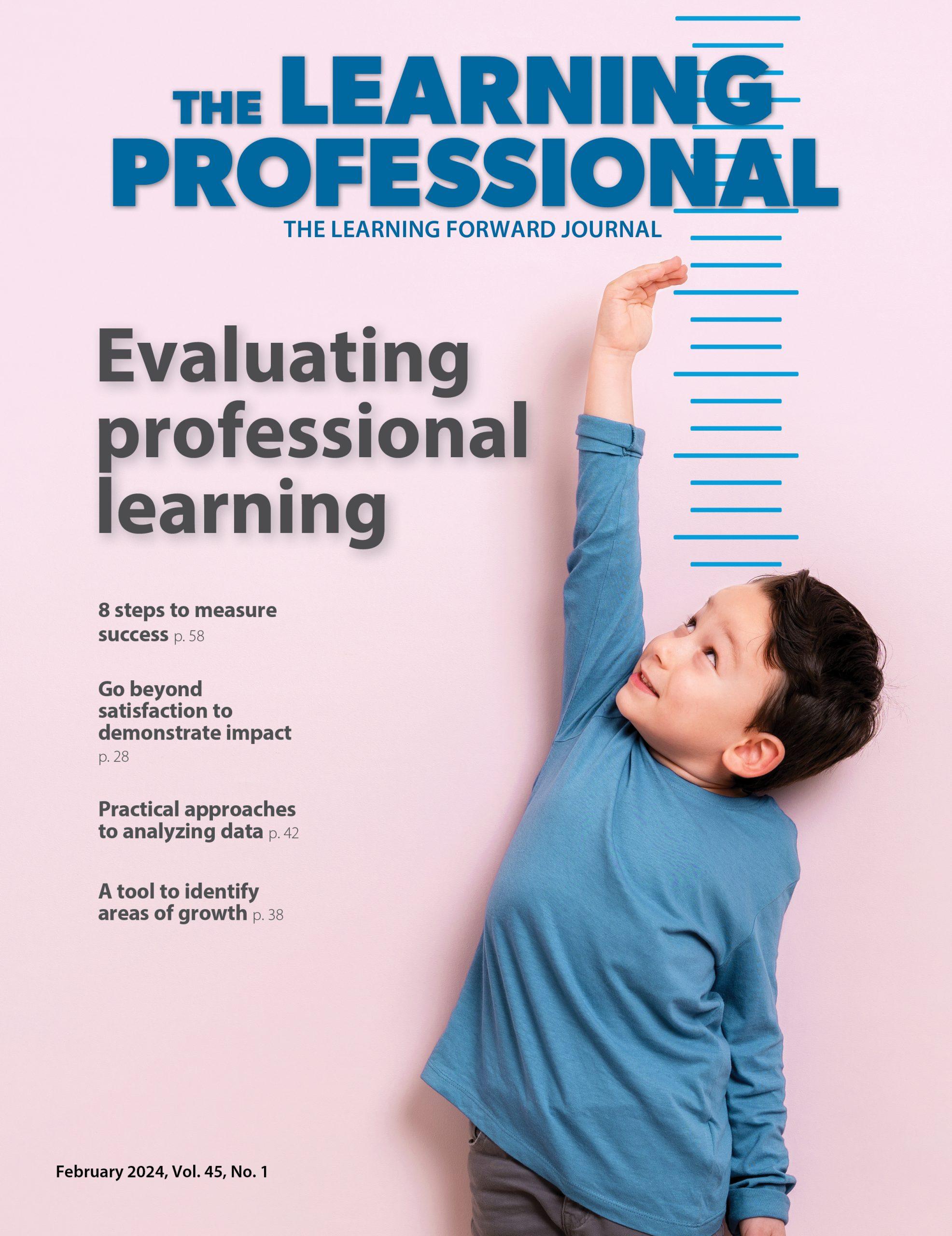A Convergence Of Energy And Talent
External support boosts New York district's literacy initiative
By Learning Forward
October 2013
Read the remaining content with membership access. Join or log in below to continue.
Sed ut perspiciatis unde omnis iste natus error sit voluptatem accusantium doloremque laudantium, totam rem aperiam, eaque ipsa quae ab illo inventore veritatis et quasi architecto beatae vitae dicta sunt explicabo. Nemo enim ipsam voluptatem quia voluptas sit aspernatur aut odit aut fugit, sed quia consequuntur magni dolores eos qui ratione voluptatem sequi nesciunt. Neque porro quisquam est, qui dolorem ipsum quia dolor sit amet, consectetur, adipisci velit, sed quia non numquam eius modi tempora incidunt ut labore et dolore magnam aliquam quaerat voluptatem.
Join The Conversation
Mike Murphy will answer questions and expand on the ideas in this article during a live webinar Nov. 7. For more information and to register: www. learningforward. org/learning-opportunities/ webinars.
Webster Central School District
Webster, N.Y.
Number of schools: 11
Enrollment: 8,647
Staff: 668
Racial/ethnic mix:
- White: 89%
- Black: 3%
- Hispanic: 4%
- Asian/Pacific Islander: 3%
- Native American: 0%
- Other: 0%
Limited English proficient: 2%
Languages spoken: 40
Free/reduced lunch: 13%
Special education: 8.5%
Contact: Adele Bovard, superintendent
Email: Adele_Bovard@ websterschools.org
Vision for Literacy
When this literacy initiative is fully in place, how do you think our school will be changed? Think about these key groups and our school structure.
- Students
- Teachers
- Parents
- Community
- School
The Change Theory

Vision Statement For Webster Central Schools
The Webster Central Schools are dedicated to a student-centered, innovative, rigorous elementary balanced literacy program where:
Students:
- Are engaged in and value literacy as a life skill;
- Are known, challenged, and believed in as learners in a safe environment that values literacy;
- Identify, articulate and demonstrate the strategies of good readers and writers;
- Help guide their own personal literacy achievement pathways through personal goal setting;
- Interact with text at their independent levels the majority of each school day;
- Are challenged at their literacy instructional levels a portion of each school day;
- Have access to engaging materials that they can read, understand, and learn from on their own; and
- Use their literacy strategies in multiple contexts to learn and problem solve both in school and outside of school.
Teachers:
- Demonstrate and articulate a common understanding of a comprehensive, balanced literacy program focused on student goals and outcomes;
- Build on their own teaching strengths while capitalizing on student capabilities and student learning strengths;
- Incorporate innovative, powerful, differentiated, literacy practices in daily work with students;
- Create supportive and challenging classroom cultures that immerse students in literacy and promote student risk taking;
- Effectively use professional learning communities to drive decisions about assessment, the analysis of assessment data, and implications for changes in instruction;
- Regularly participate in high-quality, authentic, differentiated district and schoolwide professional development and implement the content and skills into daily practice; and
- Nurture new and deeper partnerships with parents and community leaders to promote literacy and create supportive literacy cultures at home.
Schools and School Leaders:
- Showcase literacy instruction that is differentiated, based on readiness, learning profile, and /or interest;
- Guarantee clear, consistent literacy outcomes for each grade level;
- Demonstrate understanding of the essential literacy outcomes for each grade level and support the alignment of these consistent outcomes across grade levels;
- Exemplify clarity of district and school literacy leadership roles and act according to those roles;
- Create and sustain structures to support frequent conversations about literacy using common district language; and
- Support the sustained and accessible professional literacy learning through ongoing, job-embedded, collaborative implementation of powerful, innovative practices.
Parents and Community:
- Are invested in literacy partnerships among parents, schools, and the community to promote high levels of literacy;
- Interact with children to support and sustain developmental literacy learning at home and in the community;
- Support engagement in relevant and authentic literacy applications; and
- Demand that students invest in literacy as high-performing citizens.
Source: Webster Central School District.
Districtwide Levels of Use: Classroom Libraries

About the Center for Results
Learning Forward’s Center for Results offers high-impact consulting and programs, providing the tools and technical support to transform professional learning and increase educator capacity to improve student achievement. The center offers support services to school systems nationwide, customizing its assistance to meet district needs. Through Coaches’ Connect, the center provides instructional coaches with on-demand support using a one-to-one coaching platform powered by Tutor.com.
For more information, contact M. René Islas, director, at rene.islas@lfstage.xyz.
Actions that Connect to the Literacy Vision

Recurring Management Cycle

References
Hall, G.E. & Hord, S.M. (2011). Implementing change: Patterns, principles, and potholes (3rd ed.). Upper Saddle River, NJ: Pearson.
Learning Forward is the only professional association devoted exclusively to those who work in educator professional development. We help our members plan, implement, and measure high-quality professional learning so they can achieve success with their systems, schools, and students.
Recent Issues
LEARNING TO PIVOT
August 2024
Sometimes new information and situations call for major change. This issue...
GLOBAL PERSPECTIVES
June 2024
What does professional learning look like around the world? This issue...
WHERE TECHNOLOGY CAN TAKE US
April 2024
Technology is both a topic and a tool for professional learning. This...
EVALUATING PROFESSIONAL LEARNING
February 2024
How do you know your professional learning is working? This issue digs...








